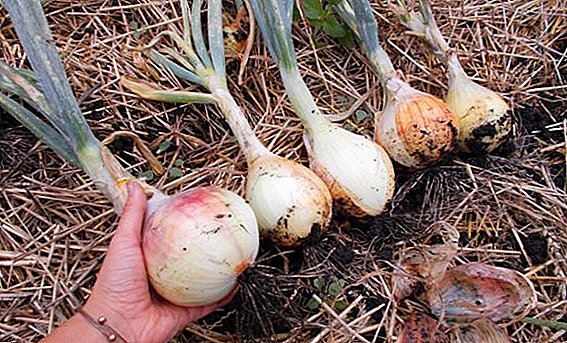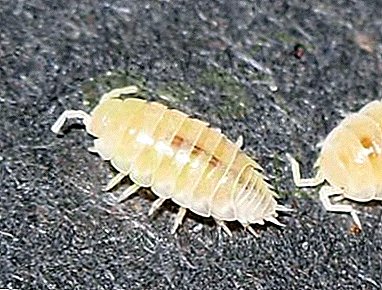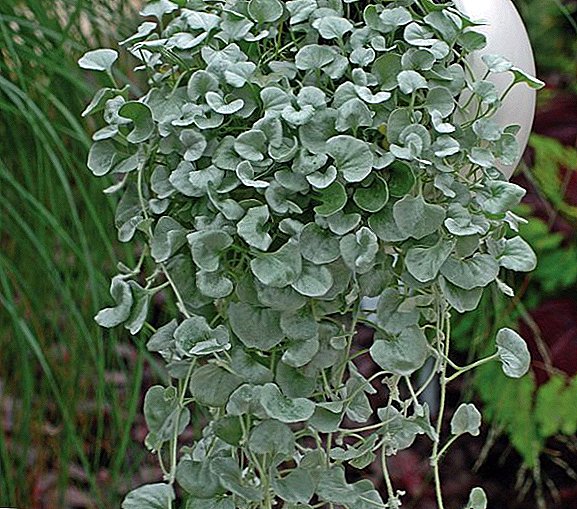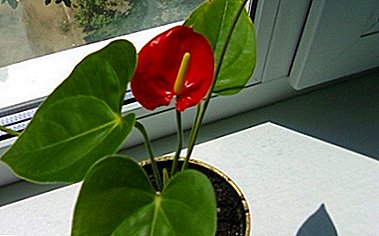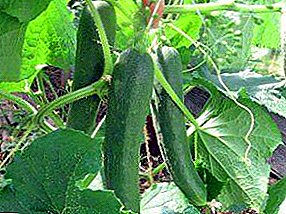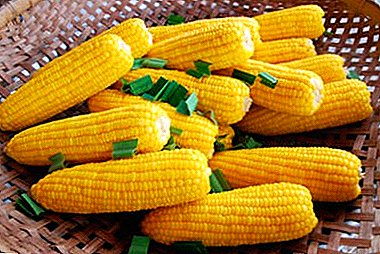
Favorite by many vegetable delicacy - corn - not without reason called the "queen of the fields." Its vitamin and mineral composition and excellent taste make maize dishes (also called corn) not only a welcome treat on our tables, but also a storehouse of benefits for the human body.
In this article we will talk about the basic properties of a wonderful cereal, methods of its preparation and storage.
Beneficial features
Corn is good for health with fiber content, fatty and essential oils, vitamins A, C, PP, E, almost the entire group B, a large number of minerals - magnesium, calcium, manganese, iron, phosphorus, zinc and others.
Corn helps cleanse the body, removing toxins and toxins. Despite the high calorie content (from 88 to 325 kcal per 100 g), it reduces cholesterol, normalizes metabolism and helps fight excess weight. Eating corn is a good prevention of cardiovascular diseases.
 The grass has a diuretic and choleretic property, therefore it is effective in the complex treatment of hypertension and for the removal of edema. Corn is good for the digestive tract: it regulates the work of the stomach and intestines.
The grass has a diuretic and choleretic property, therefore it is effective in the complex treatment of hypertension and for the removal of edema. Corn is good for the digestive tract: it regulates the work of the stomach and intestines.
In order to maximally enrich your body with useful substances contained in corn, you need to know how to cook the cereal properly and in what conditions to store the dish. And here, many housewives are faced with a dilemma: to drain or not to drain the water after cooking the corn. The answer to this question depends on how long and in what form you are going to save the finished product.
Home Storage
Is it possible to leave the corn in this water or need to or drain? Gourmets know that it is most pleasant to feast on freshly prepared corn. However, if the boiled vegetable is properly prepared for storage, you will be able to save both its taste and vitamin “bouquet”.
If you need to keep ready-made cobs for a short time, then the most reliable option is to leave the corn in boiling water, and wrap the dishes in which it was boiled with a thick cloth or warm clothing. Also, boiled cereal can be packaged in bags and wrapped in a warm blanket. A proven way to keep corn hot and soft for several hours is to wrap the cob in several layers of foil.
IMPORTANT TO REMEMBERthat all the above methods at room temperature will work a maximum of ten hours. After this period, it is not recommended to eat corn harvested in this way.
To save the finished product for several days, you need to use one of the following methods:
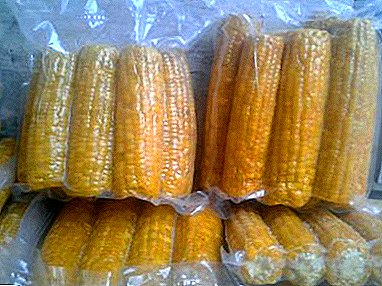 Leave the cobs in the saucepan with the broth, cool them, and send them in the refrigerator, where they will remain fresh, soft and tasty for at least three days.
Leave the cobs in the saucepan with the broth, cool them, and send them in the refrigerator, where they will remain fresh, soft and tasty for at least three days.- You can also remove the ready fruit from the water, cool them, put them in a plastic container with a sealed lid, put them in the refrigerator.
Conveniently and efficiently will store boiled corn in the form of grains. Separating them from the cob and placing in a cold place in the package, you are guaranteed to keep the product fresh and juicy for at least two or three days.
By the way in the form of grains, boiled corn can be preserved for up to three months. For this you need:
- cool the finished cob;
- to separate the grain;
- pour them into a glass container;
- pour salted boiled water;
- close tightly and clean in a cold place;
- after a couple of weeks, it is recommended to add salt water (1 tsp. of salt per 1 liter of water).
Regardless of when you take out the boiled corn from the decoction, do not rush to pour it. It is tasty, useful, nutritious and can be used both for culinary purposes, for example, for stewing vegetables or making soup, and in cosmetology - to strengthen nails and hair, and to care for face skin.
Will freezing help?
A rather common misconception is that corn is a seasonal delicacy. In fact, when stored in a freeze, you can enjoy vegetable cereal all year round. Moreover, this method of storage is well suited for both boiled and fresh corn.
Boiled cobs can be stored in the freezer from 8 months to a year. To do this, they need:
- cool;
- dry on a towel;
- pack in packages;
- removing excess air;
- to freeze.
If you do not have enough space in the freezer, it is best to keep corn beans in it:
- separate them from the boiled cobs;
- lay in one layer on a flat surface;
- put in the freezer for an hour or two;
- then pour the frozen grains into packets, tie them tightly and place them in the freezer.
TIP! Fresh corn can also be frozen on the cob and grains.
If you chose the first option, then it is necessary to ensure that corn does not become "rubber":
 Before freezing the cob, it is advisable to blanch, after cleaning them from coarse leaves.
Before freezing the cob, it is advisable to blanch, after cleaning them from coarse leaves.- When only young leaves remain on the corn, it must be alternately lowered into boiling water, then into ice water. Small cobs blanch about 10 minutes, larger - 15 minutes.
- Then they are dried, wrapped with cling film and put in the freezer.
The shelf life of corn with such freezing will be up to six months.
If you freeze the grain, the cobs also need to be blanched. Then, after separating the grains, freeze them in a single layer, pack them in bags and send them in storage in the freezer.
Watch the video about freezing corn for the winter in 2 ways:
And a few more ways
For a short time, corn can be stored in the vegetable compartment of the refrigerator. Here, a delicious cereal for 10 days can retain its beneficial properties and remain suitable for further preparation. To do this, you must leave the cob in the leaves, wrap it in a plastic bag and, having made holes in it, so that the corn "does not suffocate", send it in the refrigerator. It is necessary to clean the corn stored in the refrigerator immediately before cooking.
About three weeks corn will be stored in the vegetable compartment, if you send it to the fridge in the beans. The instructions for the tab in this case are:
- Cobs must be thoroughly cleaned.
- Then put them for 15-20 minutes in a saucepan with water, ice cubes, lemon juice and salt (1 teaspoon per 1 liter of water).
- After that, separate the grains.
- Drain water through a colander.
- Hermetically pack the corn in plastic containers or bags.
- Put in the fridge.
In terms of long-term storage of corn outside the refrigerator, we offer you two ways.
Your attention is invited to the recipe of conservation, which has become a classic homemade blanks:
 Prepare the brine at the rate of 3 tsp. sugar and salt to 1 liter of boiling water.
Prepare the brine at the rate of 3 tsp. sugar and salt to 1 liter of boiling water.- Spread the corn on sterilized jars, fill with brine, add spices to taste.
- Roll up the jars and put them in the pantry, cellar or basement.
Canned corn can be used as food for three years. And this is a great advantage of home canning before the store, the shelf life of which is due to storage in a can no more than one or two years.
The way corn is stored for those who plan to make flour or cereal from a cereal crop:
- To do this, corn must be dried.
- The cobs are cleared of foliage, corn stalks are removed from them and suspended by leaves in a shade.
- After natural drying, the grains are cleaned and left in the sun until ready.
- You can also dry them in the oven a little.
- It is better to store dried corn in cloth bags.
- in the pan;
- in the slow cooker;
- in the microwave;
- For fishing;
- in a double boiler;
- in the oven;
- on the cob;
- fresh corn;
- frozen;
- young.
Whichever of the above-mentioned ways of storing corn does not suit your taste, remember: by harvesting cereals for the future, you provide yourself not only with a nutritious and tasty diet, but also with vitamin-energetic feed for the body. After all, corn is one of those products that does not lose its properties in any form.


 Leave the cobs in the saucepan with the broth, cool them, and send them in the refrigerator, where they will remain fresh, soft and tasty for at least three days.
Leave the cobs in the saucepan with the broth, cool them, and send them in the refrigerator, where they will remain fresh, soft and tasty for at least three days. Before freezing the cob, it is advisable to blanch, after cleaning them from coarse leaves.
Before freezing the cob, it is advisable to blanch, after cleaning them from coarse leaves. Prepare the brine at the rate of 3 tsp. sugar and salt to 1 liter of boiling water.
Prepare the brine at the rate of 3 tsp. sugar and salt to 1 liter of boiling water.